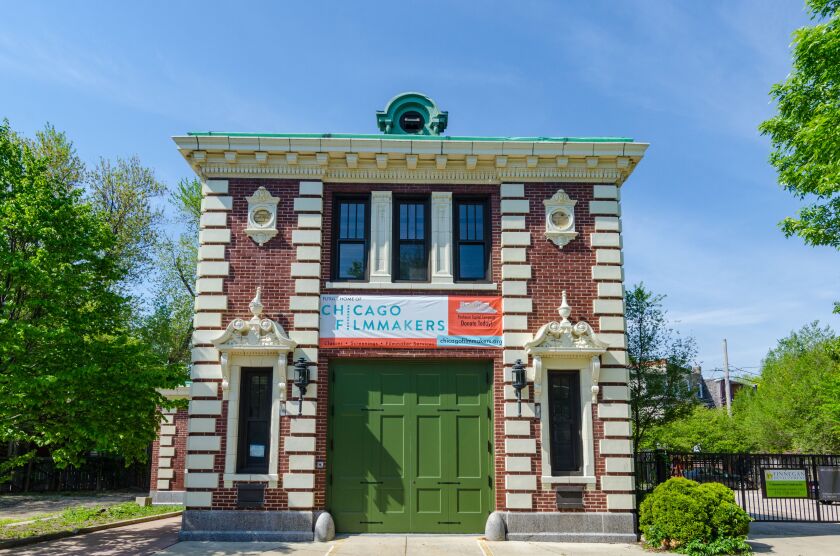We’ve all had this experience living in a city that’s so varied and stylish: We walk down a street in Chicago, spy something and say, “What’s that building?”
Or to get more specific, we’re really saying, “That building is beautiful. What’s its story?” Or maybe, “That thing isn’t my cup of tea. But it’s unusual. What’s its story?”
Mr. Google is at the ready for a fast answer. But if you want a deeper dive, a concise consideration of a building’s aesthetics and context, one of the prime sources has been the “AIA Guide to Chicago.” Its fourth edition, the first since 2014, is now out and it is a gem repolished.
AIA refers to the American Institute of Architects, which has a Chicago branch. The institute held a convention in Chicago last month and typically issues a new guidebook when it comes back every few years. “I never stop working on it,” said Laurie McGovern Petersen, the book’s editor and a freelance writer who has been involved since the first edition in 1993. “The minute it’s sort of put to bed, at the printer, no more changes, that’s when I start a new folder for the next edition.”
As well she must, because the 648-page book covers almost 2,000 sites. New construction and changes in use mean information constantly needs updating. Each edition grows by about 10%, and while the new version isn’t exactly svelte, it’s portable enough to stash in a backpack for a neighborhood tour. Chapters are organized by area of the city, with maps that highlight each site by number. “Chicago” in this book means just that. It covers the city proper, with a jaunt to Oak Park. Sorry, Evanston.
Petersen said she’s most proud of the new themes in the book. There are more entries from the neighborhoods and appreciation of female and minority architects. She’s added a 32-page insert of color photography covering styles and subjects such as Art Deco, Modernism and quintessential Chicago housing types. The captions include where to go in the book for more information. Petersen points out distinction in unexpected places. The book “shows things like power stations, field houses and CTA stations that you wouldn’t think would be delightful but are,” she said. Recent favorites of hers include new libraries that combine that function with affordable housing.
For this endeavor, Petersen stands on the shoulders of scores of contributors, particularly founding editor Alice Sinkevitch. Entries for the buildings reflect a “chorus of voices,” Petersen said, and the fourth edition benefits from the photography of Eric Allix Rogers, with a cover shot by Tom Rossiter that combines downtown’s splendor with neighborhood rooftops. Contributors include the Sun-Times’ own Lee Bey. Published by University of Illinois Press, the book retails for $42.95, $14.95 as an e-book.
Highlighted newcomers include architect Jeanne Gang’s St. Regis Tower, a commanding presence near the lakefront and a building that, when seen from certain angles, looks like it is pouring from the sky. The 2020 building followed Gang’s Aqua tower from 2009, with balconies that seem to undulate. “It’s poetic justice that [St. Regis] is so visible, because Aqua is so hemmed in now by other buildings, it’s difficult to see,” Petersen said.
Less monumental works also get their due, such as imaginative rehabs of Cook County Hospital, artist Theaster Gates’ conversion of an old bank on the South Side into a cultural center and a former firehouse on the North Side now devoted to Chicago filmmakers.
The format allows for commentary on whether a design is successful but criticisms are measured and not hit-and-run. “I hope that people read a description of a building they might have written off as ugly. They’ll get a description of the whys and wherefores of the design and maybe appreciate it more,” Petersen said.
She also said the book calls attention to post-World War II designs that used to be ignored but are acquiring admirers as they age. For older structures, the book pairs well with the Chicago Historic Resources Survey, an unusual effort from the 1980s and 1990s in which City Hall staffers, without benefit of the internet, traveled block by block to notate interesting buildings. They found about 17,000, neglecting structures then thought too new to be worth inclusion. Their old findings are still available online, but the effort is sadly out of date. Preservationists have groused about that, but with the demands on city government, it might be too much to ask for a publicly funded repeat. Maybe the “AIA Guide to Chicago” can inspire some new thinking.
Consider this a polite hint for any enterprising architectural school or club, or a foundation, that can muster knowledgeable volunteers for a public service. Hello, interns?








